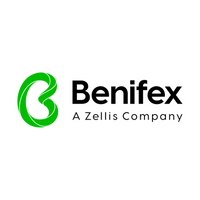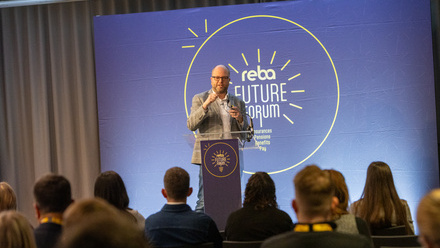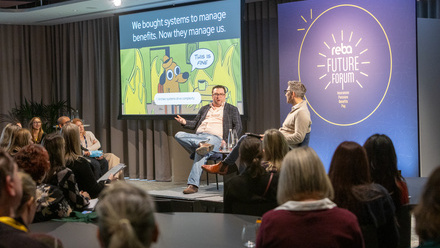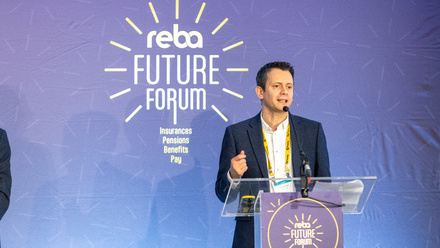Fixing the value void: How employers can reclaim the power of benefits
Over the last few years, a growing void has been appearing between what employers think they’re delivering and what employees actually experience. This “value void” exists despite significant increases in benefits investment and is partly the result of a global surge in employee expectations.
Today, organisations recognise that employee benefits aren’t just a support function – they’re a strategic lever. Yet despite good intentions, many fail to connect employees with the value of their benefits in meaningful, impactful ways. That disconnect is undermining both investment and employee experience.
The rise of benefits as a priority
For the last 20 years, the importance of benefits has grown significantly. In 2017, an average of just 49% of global employees valued their benefits package. By 2024, that figure had risen to 69%.
This rise is part of a broader shift in employee expectations and underscores the growing importance of a well-designed, well-communicated benefits strategy.
More than two-thirds (66%) of employees now value their benefits as much as their salary, and say they’d forgo a pay rise in exchange for their favourite benefit. According to Benifex’s latest research, 81% of employees say benefits and rewards are important when choosing an employer, and 71% say the benefits their company offers matter more now than they did two years ago.
Benefits have become a key driver of recruitment, retention, wellbeing, and employee engagement. So why are so many employees still not feeling the full value?
Health and wealth
Two core needs stand out behind the rising appreciation of benefits: financial stability and personal wellbeing.
Employees globally are facing rising living costs and struggle to get access to healthcare - often facing long waiting lists. They’re also facing short-term financial issues like living paycheck to paycheck, feeling worse off than the previous year or like their finances are negatively impacting their lives.
What’s most striking is the shift in what people prioritise. Eight out of ten (82%) now consider wellbeing a top priority, and most would rather be 25% healthier than 25% wealthier - regardless of income.
This marks a shift in what employees want from their employers. They’re not just looking for more money – they want support that makes life better emotionally, physically, and financially.
Understanding the disconnect: Perception vs reality
Our research of 3,000+ employers and employees globally uncovered a Value Void. While 60% of employers believe their employee experience is excellent, just 19% of employees agree.
Although there’s growing recognition of employer efforts – two-thirds of employees say their benefits positively impact their lives – it’s only part of the picture.
Despite the good intentions and increased investment, many employees remain unclear on the value of their benefits. They’re unsure what they’re entitled to, whether they’re making the most of what’s available, or even how to access what’s on offer.
This disconnect is the value void. It’s not just about what’s offered, it’s about how benefits are communicated, accessed, and experienced.
Communication is the key
Benefits only deliver when employees understand, access, and use them with confidence.
Right now, that isn’t the case. More than 6 in 10 employees struggle to see the full value of their benefits, and just as many aren’t sure if they’re making the most of what’s available to them. A massive 78% want help understanding their benefits, and 85% say they need to be simpler to access and navigate.
Clear, consistent, personalised messaging is critical for building value and confidence. Investing in better guidance around benefits – through platform content, decision support tools, and tailored campaigns – can drive higher engagement and more informed choices.
Real results from better communication
We tested targeted communications with a pilot group at a global real estate company. Through the Benifex Home platform, employees received personalised content that doubled benefit decision-making, increased employee selections by 19%, and boosted uptake of specific benefits by 434%, while employee queries dropped twelvefold.
A UK motor breakdown provider saw similar results – benefit submissions rose 50%, and one benefit saw a 300% increase in take-up. Another organisation saw 70% of employees across the UK, Ireland, and India sign up to a wellbeing app – driven purely by posts on the Home feed.
These results show how behaviour changes when people are better informed. With the right messaging, benefits go from overlooked to fully appreciated – helping employers bridge the value void.
The role of technology in closing the gap
HR and reward teams are stretched. More than half (55%) say their responsibilities are growing, and 46% struggle to shift focus from admin to strategy. Without the right tools, it's hard to track ROI, adapt to employee needs, or make a case for continued investment.
A unified benefits platform transforms this. It streamlines admin, consolidates data, and gives leaders the tools to show measurable impact. That’s why 46% of organisations now use a platform to manage benefits – more than triple the number in 2024.
When benefits are well-communicated, appreciated, and accessible, they deliver results:
- 74% of HR leaders report measurable gains in productivity and business growth.
- 69% say benefits improved employee wellbeing.
- 67% saw an uplift in engagement and motivation
Benefits technology makes it easier to align benefits with organisational goals and employee needs – especially in global, complex, workforces.
A better future
Fixing this void doesn’t mean spending more – it means making better use of what you already offer.
With personalised content, intuitive platforms, and clear communication, employees can see the real-world impact of their benefits. And as expectations grow, benefits must evolve to stay relevant.
Unlocking the full potential of your existing investment is achievable now – and will only get easier as universal AI search and intelligent benefit assistants help employees navigate an increasingly complex benefit landscape.
By having the right strategy and tools in place, organisations can finally realise the power of benefits – and when they do, everyone wins.
Read our latest research report, Propel Reward and Benefits, which explores how leading organisations are moving faster and imagining more to drive measurable value and impact.
Supplied by REBA Associate Member, Benifex
The home of award-winning employee benefits, reward, recognition, & communications.








